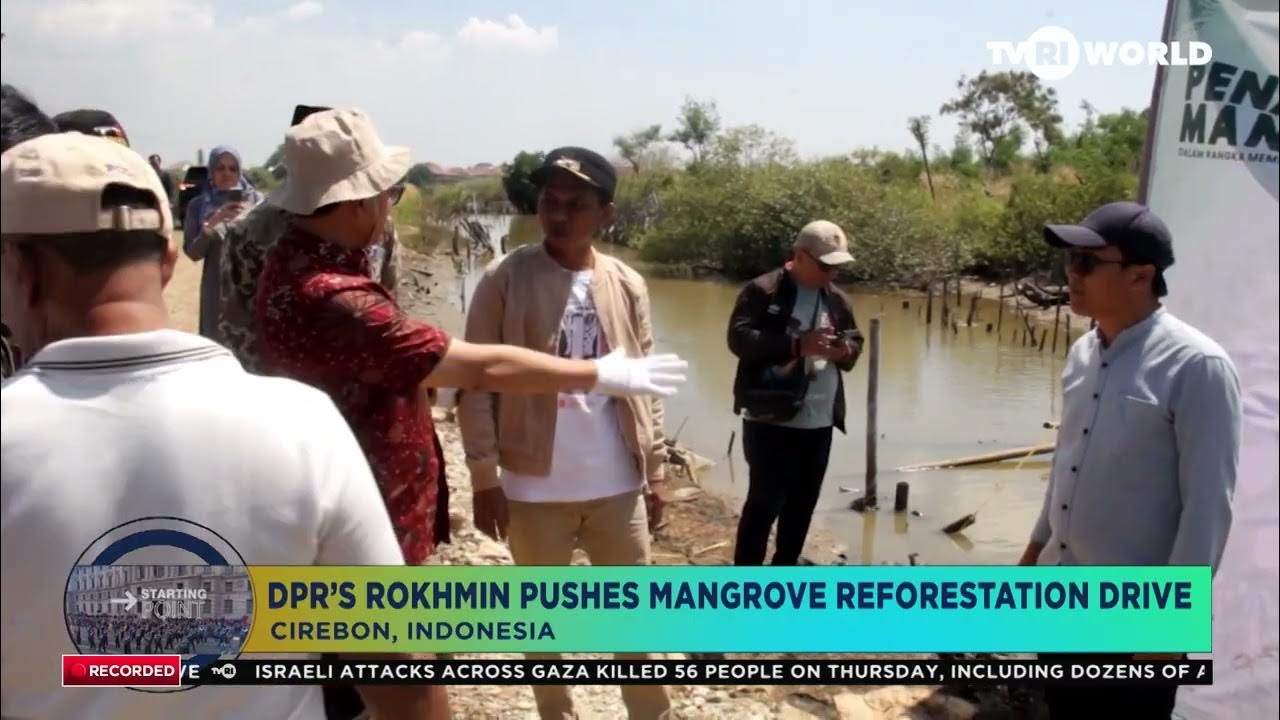Berkenalan dengan Hutan Mangrove, Pelindung Kawasan Pesisir
Summary
TLDRThe mangrove forest is a coastal ecosystem dominated by mangrove plants, found at the meeting point of freshwater and seawater. It thrives in brackish water areas influenced by tides, often in mudflats with organic accumulation. In Indonesia, mangrove forests cover 8.6 million hectares, with 75 species of mangrove plants. These forests are spread across Indonesia, from Sumatra to Papua. Mangroves offer vital benefits such as providing nutrients for wildlife, purifying water, maintaining salinity levels, offering traditional medicinal resources, and preventing soil erosion and abrasion. Key areas include the mangrove forests in Jakarta's Pantai Indah Kapuk.
Takeaways
- 🌱 Mangrove forests are coastal forests dominated by mangrove plants, located at the interface between freshwater and seawater.
- 🌊 Mangrove forests are highly influenced by tidal changes and are often found in areas with sediment accumulation and organic matter.
- 🏞️ Mangrove forests are considered a type of homogeneous forest and cover around 8.6 million hectares in Indonesia, with 3.8 million hectares in forest areas and 4.8 million hectares outside of forest areas.
- 🌍 In Indonesia, there are 75 species of mangrove plants, making it one of the most diverse regions for mangrove ecosystems.
- 🗺️ Mangrove forests can be found across Indonesia, from Sumatra to Irian Island, with notable examples in Bangka Belitung and Pantai Indah Kapuk in North Jakarta.
- 💧 Mangrove forests provide important ecological benefits, such as improving water clarity and maintaining salinity levels.
- 🦠 Mangrove ecosystems support various forms of life by providing essential nutrients to organisms living in the area.
- 🌿 Mangrove forests are used in traditional medicine, providing natural resources for various herbal remedies.
- 🌊 Mangrove forests help protect coastal areas by preventing soil erosion and reducing the impact of tidal surges.
- 🌐 Visit LindungiHutan.com for more environmental information and updates.
Q & A
What is a mangrove forest?
-A mangrove forest is a type of forest dominated by mangrove plants and located in coastal areas where freshwater and seawater meet. It is characterized by the presence of salt-tolerant plants that thrive in brackish waters influenced by tidal changes.
Where are mangrove forests commonly found in Indonesia?
-Mangrove forests can be found throughout Indonesia, from Sumatera to Irian (Papua), and are present in regions such as Bangka Belitung and even Jakarta, like the Pantai Indah Kapuk mangrove forest in North Jakarta.
What are some unique characteristics of mangrove forests?
-Mangrove forests are characterized by the dominance of mangrove plants, the presence of brackish water influenced by tides, and the accumulation of organic materials. They are often found in areas with sedimentation and are considered homogeneous forests.
How large is the mangrove forest area in Indonesia?
-In Indonesia, mangrove forests cover approximately 8.6 million hectares, with 3.8 million hectares located within forest areas and 4.8 million hectares outside forest areas.
How many species of mangrove plants are there in Indonesia?
-There are 75 recorded species of mangrove plants in Indonesia, which contribute to the diverse ecosystem of mangrove forests.
What environmental functions do mangrove forests serve?
-Mangrove forests provide various environmental benefits, including supplying nutrients for marine life, purifying water, maintaining salinity balance, offering medicinal resources, and preventing soil erosion and coastal abrasion.
What is the significance of mangrove forests in preventing soil erosion?
-Mangrove forests play a critical role in preventing soil erosion by stabilizing the coastline with their extensive root systems, which help reduce the impact of waves and tidal movements.
How do mangrove forests contribute to water purification?
-Mangrove forests help purify water by filtering out excess sediments and pollutants from the water. Their roots trap particles, improving water quality in coastal regions.
What is the role of mangrove forests in providing nutrients?
-Mangrove forests serve as a source of nutrition for various marine organisms. They provide a rich environment for fish, crustaceans, and other aquatic life, supporting biodiversity in coastal ecosystems.
What medicinal resources can be derived from mangrove forests?
-Mangrove forests provide various plant species that have medicinal uses, particularly in traditional remedies for various health conditions.
Outlines

This section is available to paid users only. Please upgrade to access this part.
Upgrade NowMindmap

This section is available to paid users only. Please upgrade to access this part.
Upgrade NowKeywords

This section is available to paid users only. Please upgrade to access this part.
Upgrade NowHighlights

This section is available to paid users only. Please upgrade to access this part.
Upgrade NowTranscripts

This section is available to paid users only. Please upgrade to access this part.
Upgrade Now5.0 / 5 (0 votes)





